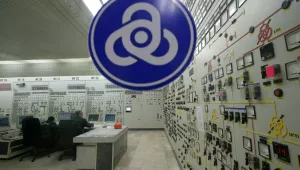Those worried about the future of the earth’s climate are hoping that this year’s climate change convention in Lima, Peru, December 2014, will yield progress toward specific national commitments, looking ahead to an international agreement at the make-or-break Paris meeting to take place in December 2015.
The precedent of the Kyoto Protocol negotiated in 1997 is more discouraging than encouraging. It was an encouraging precedent in that countries were politically able to agree on legally binding quantitative limits to their emissions of Greenhouse Gases, to be achieved with the aid of international trading and other market mechanisms. But it was discouraging in that China and other big developing countries would not countenance limits to their own emissions and, largely for that reason, the United States never ratified Kyoto.
A rare encouraging surprise came from Beijing on November 12, when US President Barack Obama and his host Chinese President Xi Jinping announced a bilateral agreement regarding quantitative constraints in the coming decade on the greenhouse-gas emissions of the world’s two largest emitters. The best hope at the moment is a looser system in which individual countries offer such plans and targets for their own emissions, as was agreed under the Copenhagen Accord in 2009 and Cancun Agreement of 2010. Many countries have submitted such plans, at least with respect to 2020 targets. The next step is to do so for 2030.
For a system of emission targets to work, there needs to exist some general notion of what is a fair target for a country to accept, depending on its circumstances. This would allow a scorecard of which countries are doing their fair share and which may not be. The idea is that those who might be less ambitious would then feel peer pressure to improve their offers.
Pinning down the concept of “fairness” would seem to be extraordinarily difficult. Perceptions of what are countries’ fair shares of the burden vary widely. India likes to point out, for example, that an average American already emits ten times as much GHGs as an average Indian; from its vantage a fair allocation would be targets of equal emissions per capita all around. Americans, for their part, think it would be unfair to make US firms pay a high economic cost to reduce emissions, if the energy-intensive industries simply relocated to developing countries that had not constrained the growth in their own emissions.
Each side has a point. Nevertheless, it would not be reasonable to expect rich countries agree to equal emissions per capita (at least not anytime soon). That would be the equivalent of transferring massive slices of national income from them to poor countries, which is not something they will ever agree to. Nor, on the other hand, would it be reasonable to ask poor countries to cut emissions the same percentage relative to current levels as the rich. This would not allow them the opportunity for economic growth that the rich have already enjoyed as they created the climate change problem.
Everyone should participate in taking on targets. But it is only fair to take into account countries’ individual circumstances, especially their standards of living. Fortunately, it is possible to describe and even to quantify what targets can be considered fair and reasonable (as ValentinaBosetti and I have demonstrated in research). Three principles:
• Latecomer Catch-up: It is fair to expect countries that have increased their emissions rapidly to bring them back down, but not practical for them to reverse fully and instantly.
• Progressivity: It is fair to expect rich countries to accept bigger cuts than poor countries, measured relative to what their emissions paths would otherwise have been (the so-called “Business as Usual” path, or BAU).
• Cost: It is not reasonable to expect any one country or group of countries to agree to cuts that would result in disproportionately large economic costs for them.
These principles are not just abstract ivory-tower proposals. It turns out that the emissions targets that countries have agreed to in the past – at Kyoto and at Cancun – tend statistically to obey a formula that quantifies the three principles. In particular, countries that were richer or that had increased their emissions faster agreed to steeper cuts than others. Among the countries agreeing to targets at Kyoto, every ten percent increase in income per capita corresponded to an agreed emissions reduction of another 1.4 per cent (relative to BAU). In the Cancun targets, every ten percent increase in income corresponded to another cut of 1.6 per cent relative to BAU. (The target paths also embodied a “latecomer catch-up factor” that pulled each country back toward what its emissions had been in 1990.)
If the formula is extended through the remainder of the century with gradually decreasing weight on the past and gradually increasing weight on per capita targets, model estimates show no country suffering a loss of more than 1 per cent of GDP in present discounted value.
Such an approach makes it possible to judge who in the current negotiations is now proposing to do their fair share, who is proposing to do more, and who less. Of course the question how to share the economic burden of any particular degree of climate change mitigation is completely different from the question as to how environmentally ambitious the global emissions path should be.
Consider the most recent developments in what targets countries have unilaterally pledged, heading into the Lima Summit. We use economic/climate models to translate pledges into common terms of emission tons and to estimate BAU (Hof et al., 2013). (Some countries express their numerical targets in terms of tons of carbon dioxide equivalent, some relative to emissions in particular years, and some relative to their GDPs.)
Figure 1 plots countries’ pledged emission cuts against their incomes so that we can judge progressivity. The vertical axis shows cuts in emissions, expressed relative to a particular baseline. The baseline is the simple average of the country’s actual 2005 emission and the 2020 BAU emission level. This baseline makes some allowance for the reality of rapid growth, particularly in developing countries, while pulling everyone partway back in the direction of 2005 levels. A statistical estimate of the “latecomer catch-up factor” embodied in the targets is .51, highly significant and remarkably close to .50. This justifies the use of the simple average in constructing the base line. The current targets have a base year of 2005 rather than 1990. Many countries now choose explicitly to express their targets as percentage cuts from their 2005 levels. For the overall sample of countries as well, the 2005 number shows up as highly significant in an unconstrained regression; the 1990 number is no longer at all significant. Evidently too much time has happened since 1990 and it is no longer treated as part of the relevant baseline. (Regression estimates are available in the full-length note.)
The horizontal axis in Figure 1 is the country’s income per capita in 2010 (on a log scale). The slope of the line corresponds remarkably well to earlier estimates on earlier data: each 10.0 per cent increase income is associated with a 1.4 percent more ambitious cut on average. The line generally fits the points, reflecting the fat that the relationship is highly significant statistically. The fit provides encouragement that countries are again implicitly operating according to notions of fairness similar to what we have hypothesized. The estimated regression equation (model number 2 in the Table) giving the pledged 2020 emission cuts expressed relative to our defined baseline is: -1.29 + 0.14*log(2010 GDP pc)..
Frankel, Jeffrey. “A Pre-Lima Scorecard for Evaluating Who is Doing their Fair Share in Pledged Carbon Cuts.” November 19, 2014





